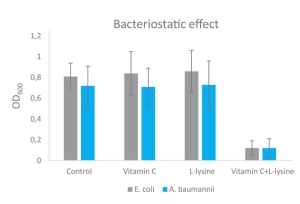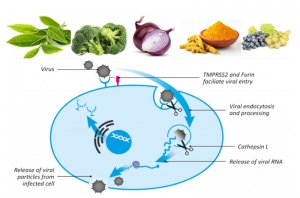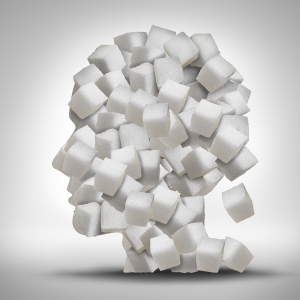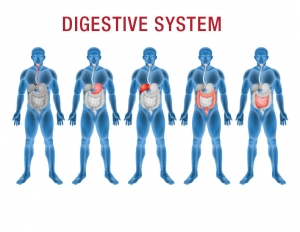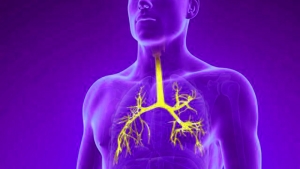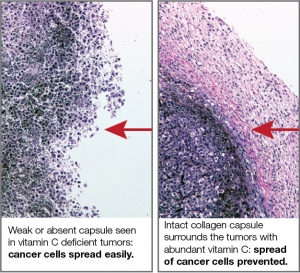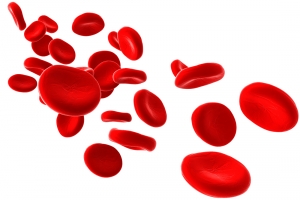In a world where bacterial infections are a constant threat, scientists at the Dr. Rath Research Institute uncovered a formidable team - lysine and vitamin C which when combined can become a powerful force against the bacteria responsible for urinary tract infection (UTI) and a range of other infections.
Bacterial infections, especially those causing UTI, are a widespread concern. These infections can disrupt your life, causing discomfort and even serious health complications, and the overuse of antibiotics has only fueled the rise of antibiotic-resistant strains, making effective treatment harder to achieve.
More than a year after the emergence of COVID-19 the world is still at a standstill facing rapid spread and new mutations of SARS-CoV-2. Many countries are struggling to have any grip on this pandemic and dealing with scarcity of new vaccines. Despite implementing preventive measures like hand washing, masks, and social distancing, the daily infections and deaths attributed to COVID-19 continue to rise.
Worldwide, 2.2 million people died of this infection with upwards of 104 million COVID-19 cases. Drastic lockdowns threw millions of people into extreme poverty, hunger, and malnutrition, and due to lack of access to nutritious food, more people have compromised immunity, thus increased susceptibility to infections. Although pharmaceutical companies are racing to produce drugs and anti-SARS-CoV-2 vaccines became available, their efficacy is now being questioned with rapidly mutating coronavirus variants. It is a well-known fact that people with pre-existing conditions such as diabetes, heart disease, and cancer have impaired immunity and are prone to serious complications from COVID-19. In this critical situation, several clinical trials have been conducted with vitamin C and other nutrients in COVID-19 patients, some with promising results. Health care providers also turned to natural approaches to improve immunity and curb the spread of infections.
Sugar is required for production of bioenergy and other metabolic processes taking place in our body cells. Though sugar is an important part of our diet, the simple fact is that our consumption of sugar largely exceeds our body’s metabolic needs. The modern diet contains approximately 50-80 grams of sugar and most of it is derived from fructose. Fructose is metabolized differently in the body than glucose is. Present in soft drinks and most types of processed food and sweets, the consequences of excessive fructose consumption are dangerous and it has been associated with an increase in diabetes, heart disease and many other health problems.
Vitamin C is a vital nutrient for human health and survival. It is not only a powerful antioxidant and immune booster, but it also supports collagen connective tissue formation and builds extracellular matrix, which is the “glue” that binds the body’s cells together. It is important for faster wound healing and prevention of various chronic conditions. Optimum amounts of vitamin C effectively protect the body and cardiovascular system against biological rusting. Additionally, there are several other important functions of vitamin C. It is a cofactor for a series of biological enzymes, which are important for the improved metabolism of cholesterol, triglycerides and other risk factors of heart disease. It is an important energy molecule needed to recharge energy carriers inside the cells. Vitamin C is essential for production of carnitine, the molecule that carries fatty acids into the mitochondria for energy production. It participates in biological recycling of vitamin E, glutathione and many other cell protective molecules, and when taken together with calcium, it increases calcium absorption. Vitamin C neutralizes various toxins in the body, and protects healthy cells from harmful substances and the effects of many pharmaceutical drugs.
The human digestive system is approximately 16 feet long and it is estimated that the digestive system will process more than 25 tons of food over the course of our lifetime! The function of our digestive system is to convert the foods that we eat into bioenergy for the cells to use for maintenance, growth, and repair. Although we tend to think of the digestive system in terms of organs such as the stomach, intestines, liver and pancreas, these digestive organs are made up of different types of specialized cells.
Gum disease affects everyone and is not exclusively a childhood disease. The Centers for Disease Control and Prevention (CDC) estimates about half of all American adults tend to have advanced gum disease at the time of diagnosis. This is because gum disease rarely produces uncomfortable symptoms until it is in late stages. While dentists look for specific signs to diagnose gum disease, certain symptoms may indicate underlying gum problems. Symptoms such as red, swollen, and painful gums, bleeding while brushing and flossing, constant bad breath, or a bad taste in mouth due to bacterial infection in gum pockets, warrant attention and further evaluation. There are studies proving a connection between gum disease and other systemic conditions such as heart disease, stroke, rheumatoid arthritis, diabetes, and many others.
With the slight seasonal variations, many people of all ages suffer from asthma attacks throughout the year. Asthma is one of the most common chronic diseases in children, affecting 7 million children and 32 million adults in the US. Worldwide 235 million people have asthma and the related deaths reach 180,000 per year.
An asthma attack is marked by severe and recurrent bouts of coughing, wheezing, and shortness of breath, which can range from a minor annoyance to a debilitating or life threatening disease. Approximately one in every 12 Americans suffer from asthma and the incidence has increased by 60% since the early 1980s. Therefore, it is not only the disease of an individual, but has become a public health problem and a huge financial burden. According to the Centers of Disease Control, the annual spending on asthma care is over $56 billion, which includes hospital visits, treatment costs, and missed workdays. In spite of such massive expenditure, asthma treatment offers only symptomatic improvement.
One in every three adults, that is approximately 67 million people in the US, already have high blood pressure and many more have prehypertension. Hypertension, or high blood pressure, is diagnosed when the blood pressure readings are consistently higher than 140/90 mm of Hg. Worldwide, there are more than 1 billion people living with uncontrolled hypertension, and the number is estimated to increase by 60% by year 2025. The lifetime risk of developing high blood pressure is more than 90% for people after 55-60 years of age.
The term “connective tissue” is frequently discussed in association with skin or joint disorders, and many people are not aware of how important it is in other chronic diseases such as heart disease and cancer.
Over 90% of cancer deaths are due to the extensive spread of cancer (metastasis). Cancer cells metastasize by breaking the connective tissue barrier that surrounds them. The strength and stability of connective tissue depends on an optimum production of collagen fibers and the prevention of uncontrolled tissue destruction. An abundant availability of several micronutrients, especially vitamin C, and the amino acids lysine and proline, is essential for this function. Unlike most animals, humans are not capable of internal production of vitamin C and lysine. Yet, most of the cancer research is conducted on mouse models that do produce vitamin C. To overcome this barrier, our research institute utilized a special type of mice that mimic human metabolism in respect to the lack of internal vitamin C production.
Angiogenesis is a physiological process in the body where new blood vessels develop from the pre-existing blood vessels. An ability to form new blood vessels is necessary for healthy body function and repair (i.e., wound healing). However, this process is high jacked by cancer cells to support faster growth of tumors and the spread of cancer.
